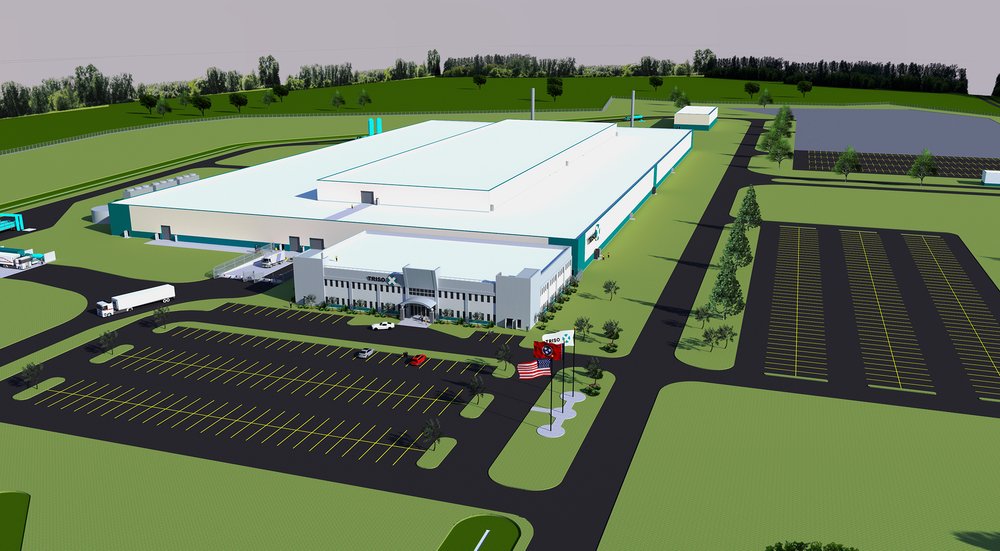Concept art of the proposed TRISO-X TX-1 fuel facility in Oak Ridge, Tenn. (Image: X-energy)
Due to the days lost to the government shutdown, the Nuclear Regulatory Commission has extended the public comment period for a draft environmental impact statement for the TX-1 advanced nuclear fuel fabrication facility being built in Oak Ridge, Tenn.
Work starts on X-energy’s advanced fuel fabrication facility in Oak Ridge, Tenn. (Photo: X-energy)
Small modular reactor developer X-energy and its subsidiary TRISO-X announced yesterday the start of aboveground construction for its TX-1 advanced nuclear fuel fabrication facility in Oak Ridge, Tenn. The first-in-the-nation facility will be the first of two Oak Ridge facilities built to manufacture the company’s TRISO fuel for use in its Xe-100 SMR.
IAEA director general Rafael Mariano Grossi (center right) attends the signing of an agreement by representatives of the EAGLES Consortium and the nuclear regulators of Belgium, Italy, and Romania. (Photo: IAEA)
The nuclear regulators of Belgium, Italy, and Romania signed on this week to the first “prelicensing” project under the IAEA’s Nuclear Harmonization and Standardization Initiative (NHSI) during the opening day of the International Atomic Energy Agency’s 69th General Conference, pledging to work with the EAGLES Consortium to clarify regulatory requirements for a lead-cooled reactor ahead of formal licensing.
The chemical vapor infiltration furnace at BWXT’s Lynchburg Technology Center in Lynchburg, Va. (Photo: BWXT)
BWX Technologies (BWXT) has achieved a key milestone in its project to additively manufacture advanced forms of TRISO fuel for Generation IV advanced nuclear reactors. The Lynchburg Technology Center of subsidiary company BWXT Advanced Technologies, located in Lynchburg, Va., has successfully installed and tested a chemical vapor infiltration (CVI) furnace that solidifies pre-forms that are then filled with TRISO particles, a fuel consisting of carbon and silicon layers surrounding a uranium kernel.
Concept art of the Dow plant in Seadrift, Texas. (Source: X-energy)
The Nuclear Regulatory Commission is providing the opportunity to request a hearing on Dow Chemical Company’s application to construct a 320-MWe nuclear power plant at the company’s Seadrift site in Calhoun, Texas. Long Mott Energy, a wholly owned subsidiary of Dow Chemical, submitted its construction permit application to the NRC in March. It was accepted for review by the agency on May 12.
 The latest report from the University of Michigan Science, Technology, and Public Policy Program’s Technology Assessment Project (TAP) will be the focus of a webinar on December 11, from 12:00 noon to 1:00 p.m. (EST).
The latest report from the University of Michigan Science, Technology, and Public Policy Program’s Technology Assessment Project (TAP) will be the focus of a webinar on December 11, from 12:00 noon to 1:00 p.m. (EST).









